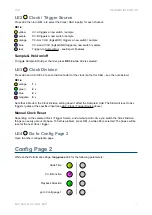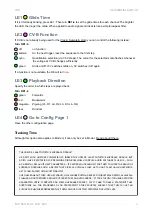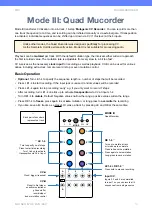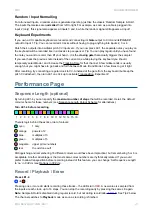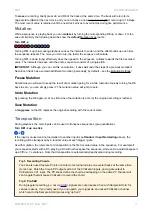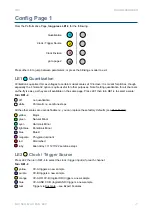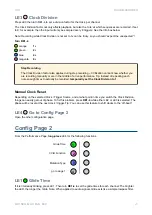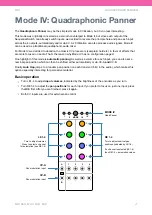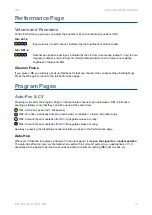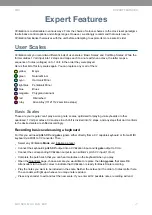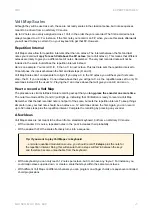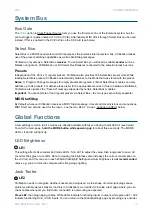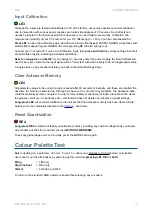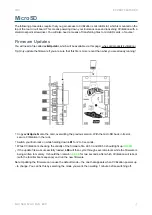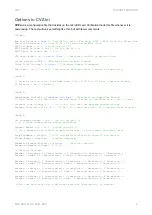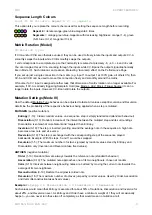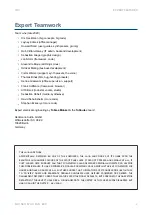
Volt Map Scales
Although they will be used as such, these are not really scales in the classical sense, but note sequences
meant to be driven from an arbitrary CV source.
Up to 32 notes are evenly assigned across 1 Volt, in the order they are recorded. The first recorded note is
always mapped to a C: For instance, if the first note you record is an F#, when you use this scale afterwards
you will need to play a certain C on your keyboard to get that F#. However…
Repetition Interval
Volt Map scales allow for repetition intervals other than an octave. The interval between the first and last
notes you record will apply
for each Volt above the 0V octave
(‘zero Volt octave’). This means that different
octaves are likely to give you a different set of notes. Remember: The very last recorded note will not be
included in the scale, but defines the repetition interval instead.
Here’s an example: You record D, E, F, then a C in next octave. This last note sets the repetition interval to
10 semitones, the interval between the first and last steps (D and C).
Volt Map Scales don’t compensate for origin: If you play a C in the 0V octave you will hear your first scale
step – the D. If you now play a C one octave above that, you will get a C, as the repetition was set to only 10
semitones instead of the usual 12. Playing the C an octave above that will give you an A#, and so on…
How to record a Volt Map
The procedure is similar to Basic Scale recording except that you
long-press the encoder one more time
.
The outer two mode LEDs (I and IV) will light up, indicating that CVilization is ready to record a Volt Map.
Remember that the last recorded note is not part of the scale, but sets the repetition interval. To keep things
simple for now, your last note should be an octave i.e. 12 semitones above the first. Again, you can record
up to 32 notes steps plus the repetition interval. Complete the recording by pressing any encoder.
A few Ideas
Volt Map scales are not meant to be driven from a standard keyboard, but from an arbitrary CV source…
• With a random CV source, repeated notes in the ‘pool’ increases their probability.
• With a sawtooth LFO the scale effectively turns into a sequence.
• With a keyboard you can only reach 12 notes per octave, but it can have any ‘layout’: For instance you
could map octaves upside down, or create a scale that stays within the same two octaves.
• With different Volt Maps on different channels you can program one-finger chords or sequencer-controlled
chord progressions.
28
Tip: If you want to play Volt Maps via keyboard
…or similar quantized modulation source, you should record
12 steps
plus the note for
the repetition interval. Doing this will ensure that no steps will fall ‘in between the keys’
and therefore become unreachable from the keyboard.
Содержание CVilization
Страница 1: ......




